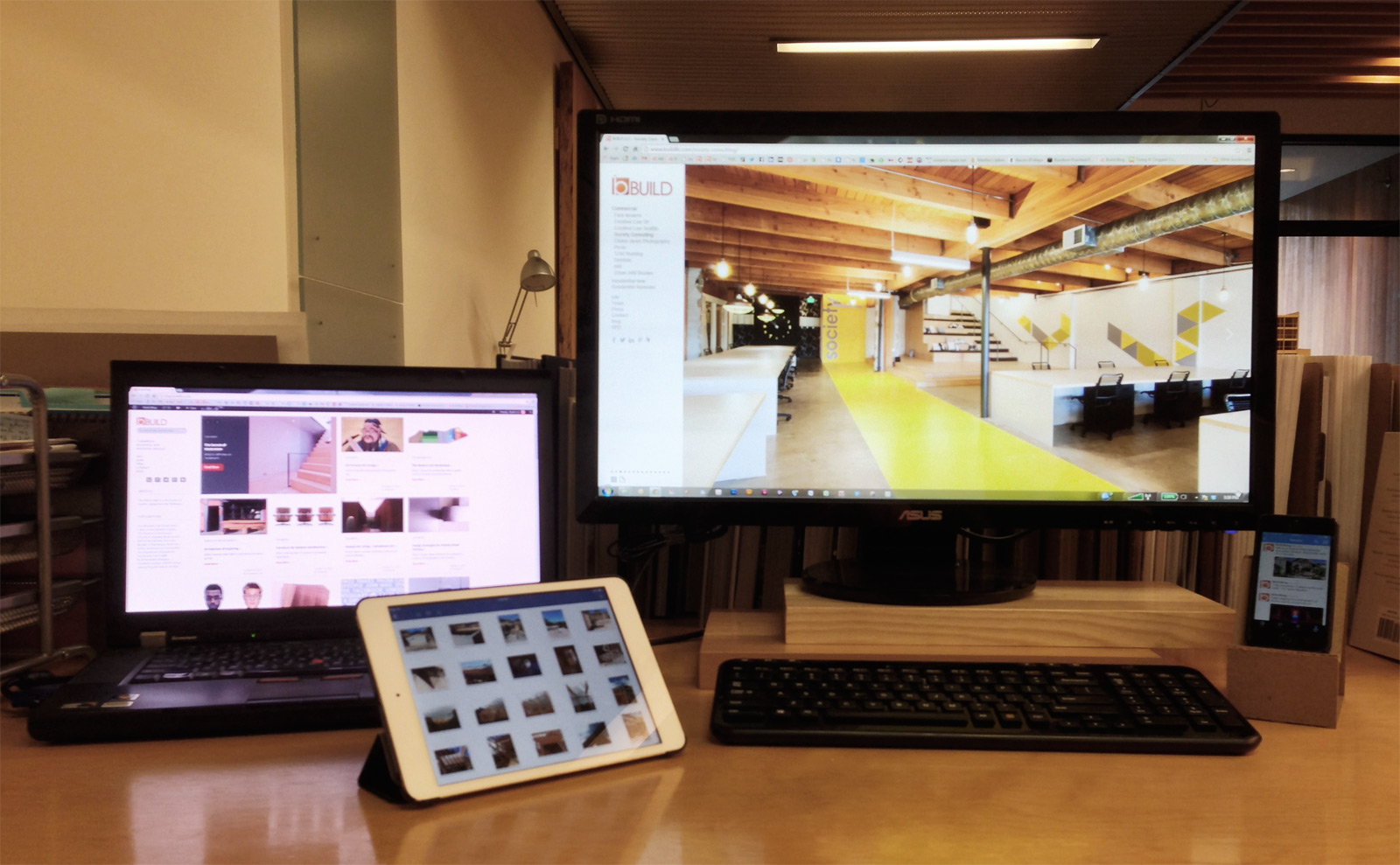
[All images by BUILD LLC]
We’re big on social media here at BUILD. In fact, we’ve been playing with the various levers of internet-based communications for over six years now and it’s become a social study of sorts. In addition to analyzing the different platforms, we also pay serious attention to the viewpoints of our audience, our colleagues, and our community with regard to social media. These groups include the full spectrum of opinions, from people who follow our every move on Facebook to individuals who think we’ve entirely lost our minds for spending as much time as we do blogging. Regardless of where you stand on the topic, today’s post should be of interest to everyone (maybe even more so for the non-believers).
As anyone remotely involved in the architecture, design, and construction industries can attest, things have picked up substantially. In fact, if you’re still in a recession, you’re doing something terribly wrong. The professional landscape has changed so significantly in the last several years for architects and builders that we decided it was a good time to re-evaluate our social media strategy in the post-recession economy. The results were surprising and informative, leading us to make significant shifts in terms of resources and how we spend our time. We’ve broken down our findings into 5 simple categories.
Websites
One of the most apparent shifts on the internet is the unlimited success of the image. Sharp, professional caliber photos have the ability to work hard for you around the clock in the digital media world. Via conduits like Facebook, Pinterest, Houzz, Materialicious, (to name a few,) images can be liked, pinned, organized, shared, and most importantly, copied. Yup, we said it — there is no greater horsepower out there for promotion than having an online army of design-savvy individuals proliferating images of your projects. Critics (and professional photographers) may take issue with us on this point, but it has been one of our most effective strategies to promote our work (and the work of others). So long as we get credit for ours photos and projects, we’re typically big fans of people sharing the heck out of our images.
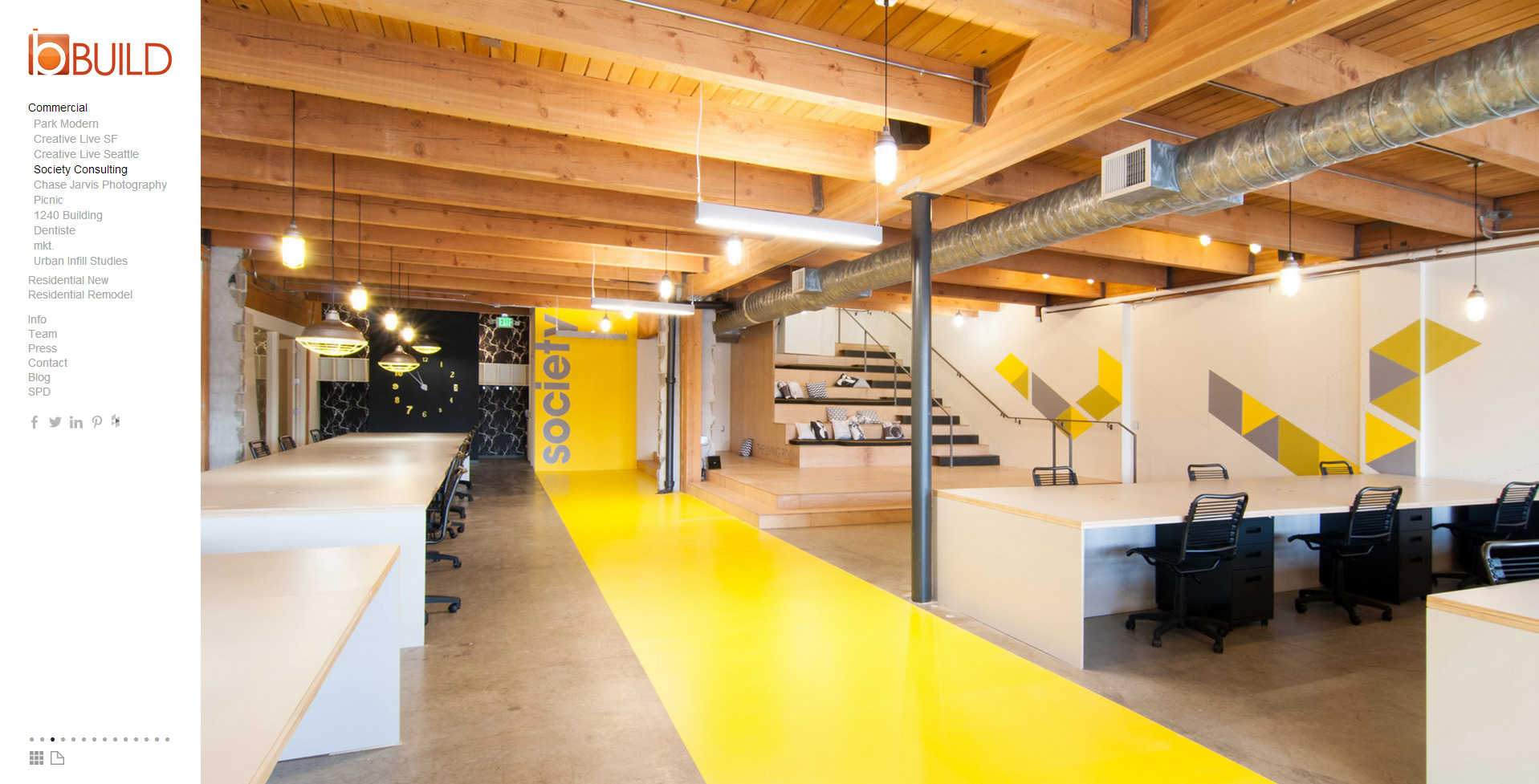
In order to effectively allow for the seamless spreading of images online, there is one primary factor: getting away from Flash-based websites, which don’t allow images to be copied or downloaded easily. Flash also doesn’t work very well on mobile devices. After reading the Steve Jobs biography, it became painfully clear to us that Apple products will never embrace Flash. Switching to an html-based website allows images the flexibility to be copied and distributed on all platforms listed. We recently switched from a Flash-based website (cue audible sigh of relief) to a Squarespace-hosted website. This not only streamlines shareability, but the images are full screen, showing off the project and taking advantage of every last pixel on your monitor. We found the templates on Squarespace to be simple, straight-forward, cost effective, and highly calibrated to the new paradigm of digital sharing. Take a spin through their design-forward templates and the check out the new BUILD website, if you haven’t already.
The lesson for websites: Allowing your work to be copied on the internet is allowing your work to be promoted.
Blogs
During the recession we used our non-billable time to develop the BUILDblog (the hub of our social media presence) and The Modern List (our ongoing list of modernism in five well-traveled cities). We released two blog posts per week on everything from technical information from the job site to our interview series with other architects. The Modern List is updated whenever we travel. In the beginning, jumping into the world of blogging seemed like a leap of faith, but the return on investment was powerful and swift, pulling us out of the recession well before the average firm in town. By the time the architecture industry picked back up to full momentum we had over 500 posts in the hopper — posts that were working day and night across the globe building our brand, giving us a voice and making a contribution to the design community.
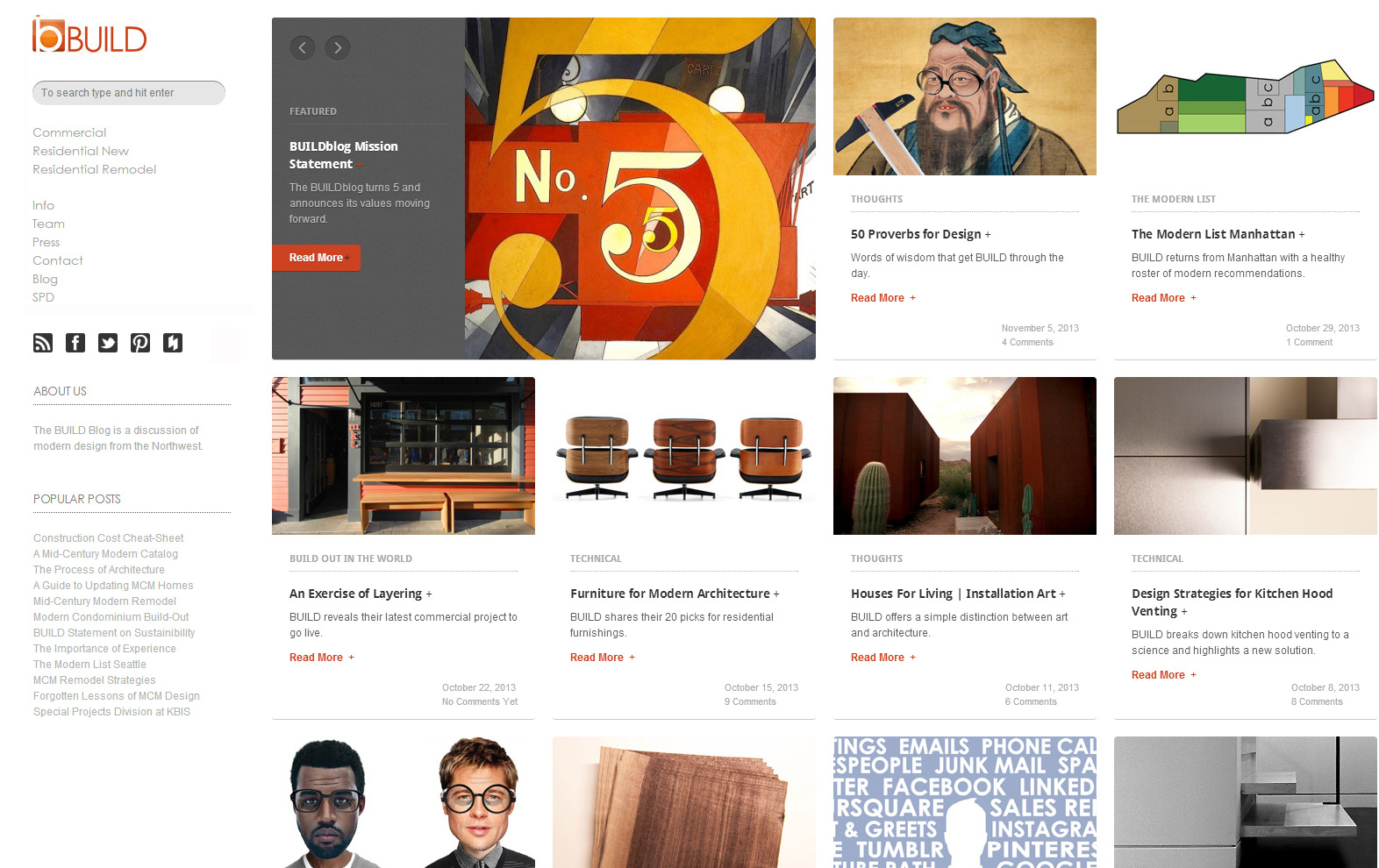
The architecture and construction industries in Seattle are officially in frenetic overdrive now and we’ve had to reexamine the balance of how our time is spent in the office. With a healthy roster of paying clients, there’s more emphasis on taking care of the billable work and less on the promotional and cultural work. Subsequently, we’ve scaled the blog back to one post a week. We’re able to fully concentrate on our current projects and coast on the 650 or so posts out there still hard at work. The Modern List continues to be our go-to guide when we travel and it saves a ton of time when people ask for recommendations.
Lesson for blogs: Use the down times to focus on the social media that will keep working for you in the busy times.
Facebook
Facebook has always been a behind-the-scenes look at our firm. We’ll post about what we’re up to in and out of the office, and occasionally bring to surface dusty memories from the archives to share a bit of firm history. Recently, it’s become a great place to share the development of our projects under construction as well as some of the finished photos that don’t make it on the website or blog. These true outtakes are there for those who are curious what we’re up to on any given week. With no set schedule for items we post on Facebook, it’s pretty casual on there. This allows us to post in real time.

While we’ve only been on it for a couple years, it’s been a great tool for connecting, sharing, and fielding questions (as time permits) from our Facebook community. Whether someone drops a comment or a Like, we get instant feedback. As one of our most easily digestible platforms we’re utilizing, Facebook is unique in that it gathers the entire spectrum of our community — professionals, students, family, friends, and (of course) friends of friends. The reach is extensive, and we’ve felt the love with about 2,000 Likes from all over the world.
The lesson for Facebook: Keep it light, casual, and show what happens behind the curtain (or construction fence).
Twitter
The little microblogging site is now all grown up with an IPO and serious news-breaking street cred. Back in 2008, when we first set up the @buildllc account, we were in experimental mode (much like everyone else). It became a loose but effective means of connecting, sharing, retweeting, and promoting to a growing community of thinkers and sharers online. We’ve hosted a contest here and there, linked to our blog posts as well as retweeting posts by some of our favorite bloggers, and would crowd-source for advice on anything we had a question about. It’s been an tremendous tool for keeping our feelers out in the design world outside of our immediate geography.
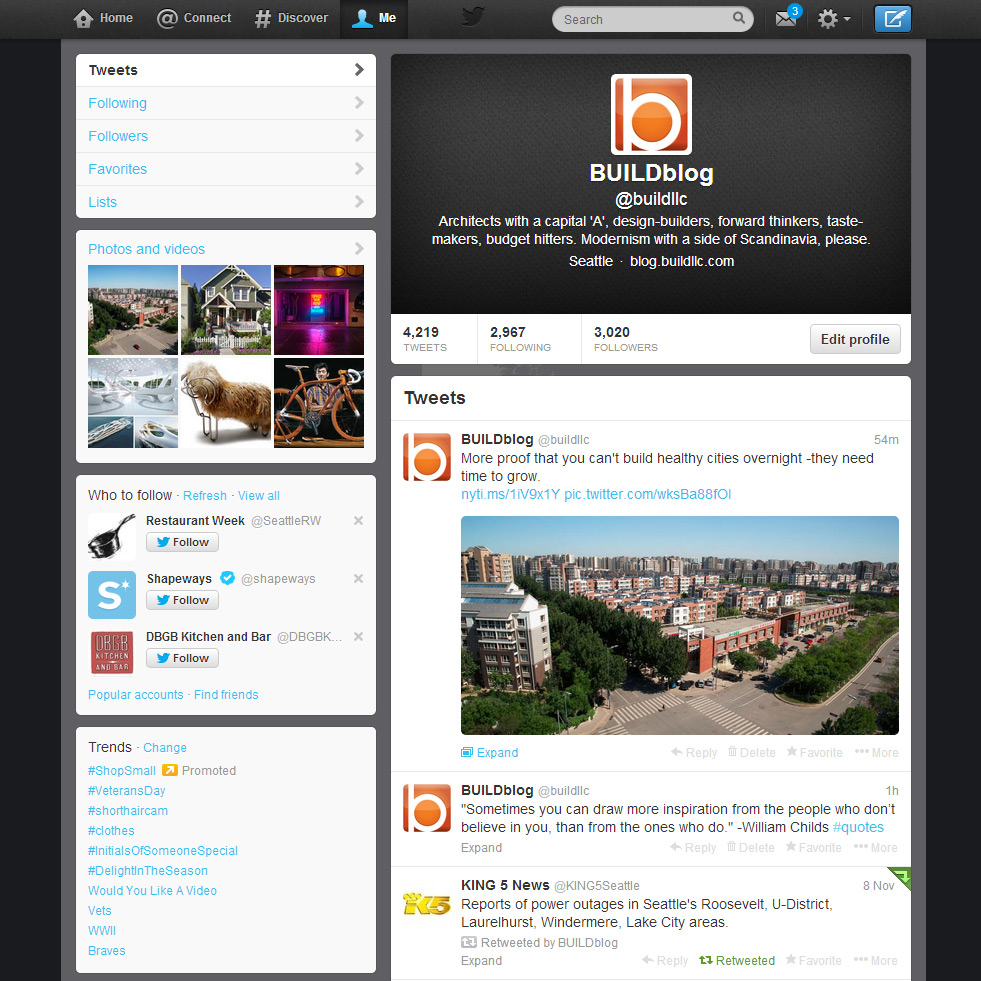
Now five years in, (our anniversary aligning with the IPO, coincidentally,) we’ve struck a healthy balance between scheduled and impromptu posts, judiciously focusing our time to curate the content of our feed to include relevant design articles, local architect-y events happening, inspirational quotes, and thoughtful blog posts, (both ours and those of our peers,) sometimes sparking a brief exchange of banter and sometimes just putting the design love out there.
The lesson for Twitter: Be consistent with your message, be generous with your retweets, and be mindful of your time. (There’s work to be done, after all.)
Portfolio Sites
These days it seems like new image-based portfolio sites are popping up every week. Whether the collection of images are your boards, idea books or projects, they all have one thing in common: they’re all about sharing your taste and cataloging your projects for the rest of the world to see.
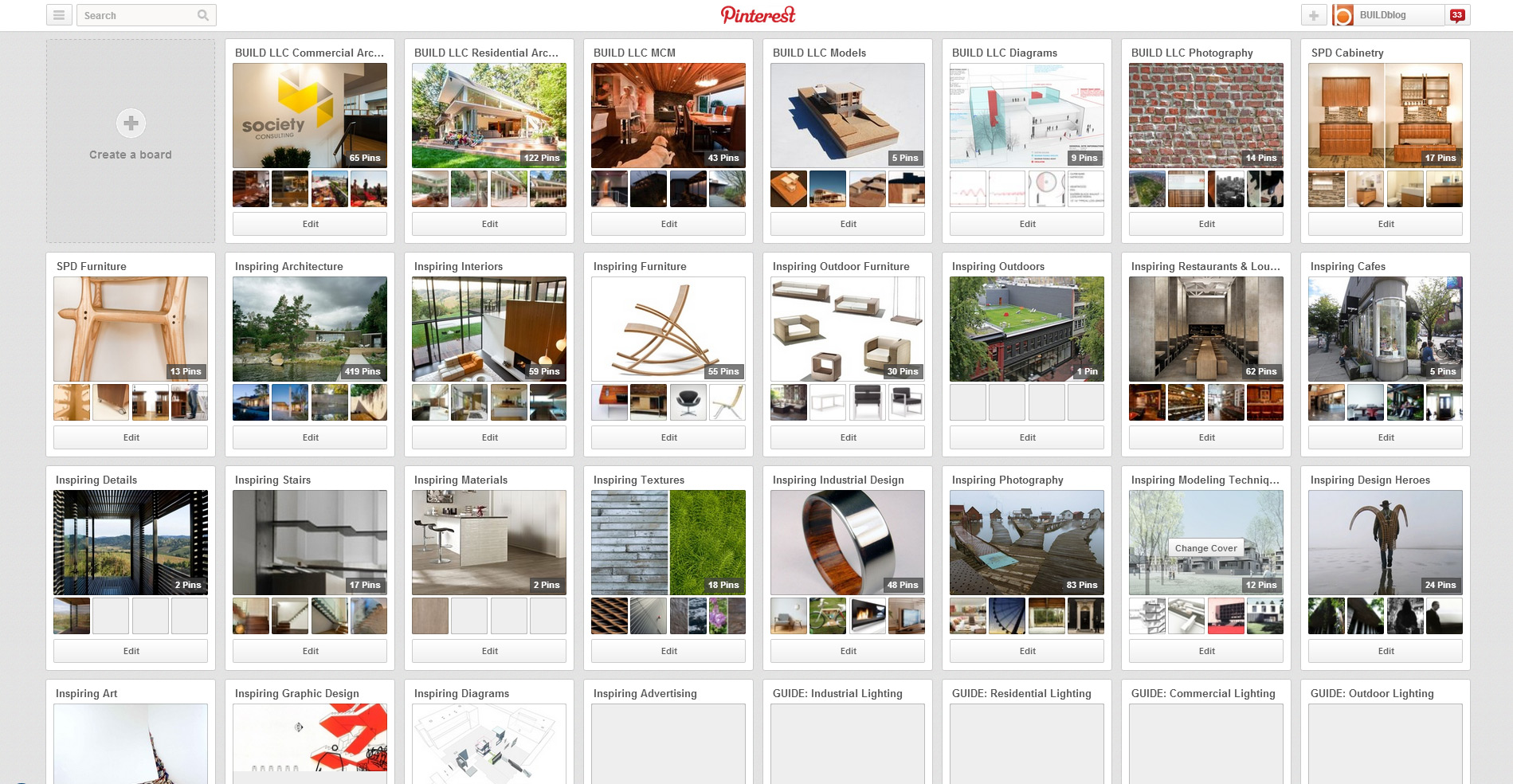
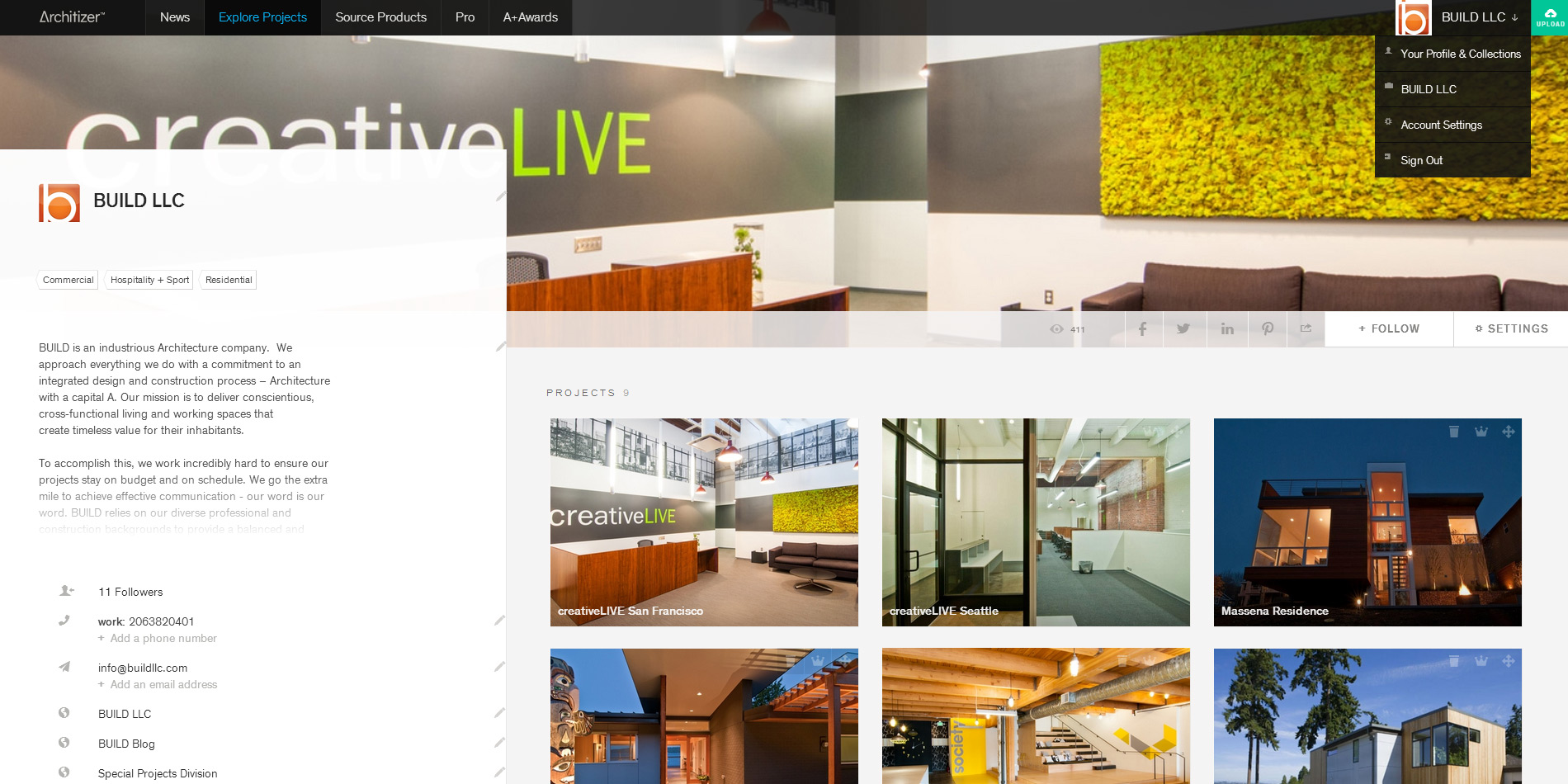
Let people take your images to pin, like, fancy, etc. Inspire them with your inspiration and your own projects. We’re on a handful of sites including Pinterest, Houzz, and Architizer, and while we don’t necessarily spend much time cross-promoting our presence there, we do use it for our own research and bookmarking, and all of it is available for anyone to check out. With sharing being the operative word for the current state of the web, it’s easier than ever for people to grab an image on your account and add them to their own. Trust us, you want that.
The lesson for Portfolio Sites: Carefully choose the site(s) you want to utilize, and integrate your time and efforts there with what you’re already spending on project research.
So there you have it, our “shortlist.” Though it seems pretty involved, we’ve established each piece of our social media package incrementally, trying to get on the train at a relatively early stage in the process. It’s given us time to learn how best to use each platform, and hopefully prepare us for whatever comes next. Hit the comments button and let us know what’s been working (or not working) in your social media adventures.
Cheers from Team BUILD





